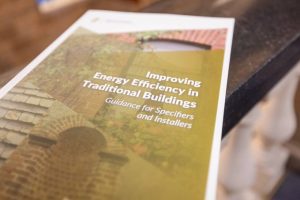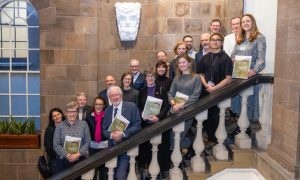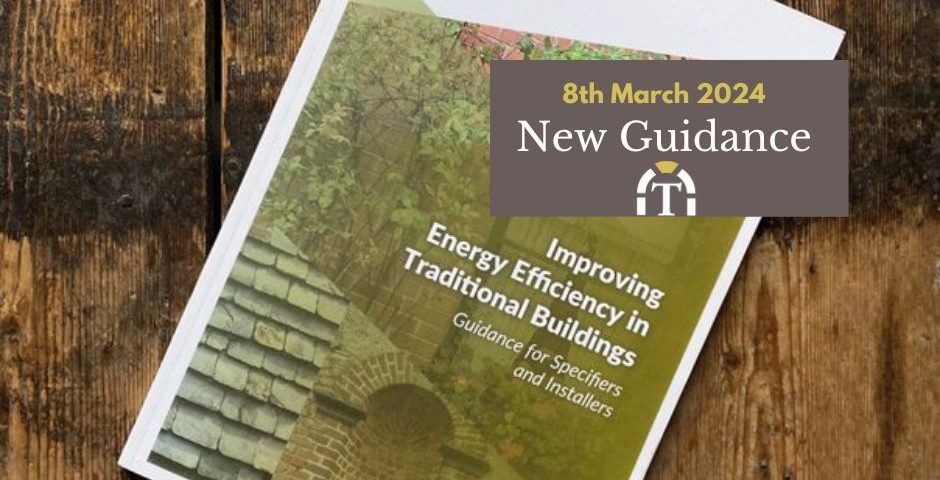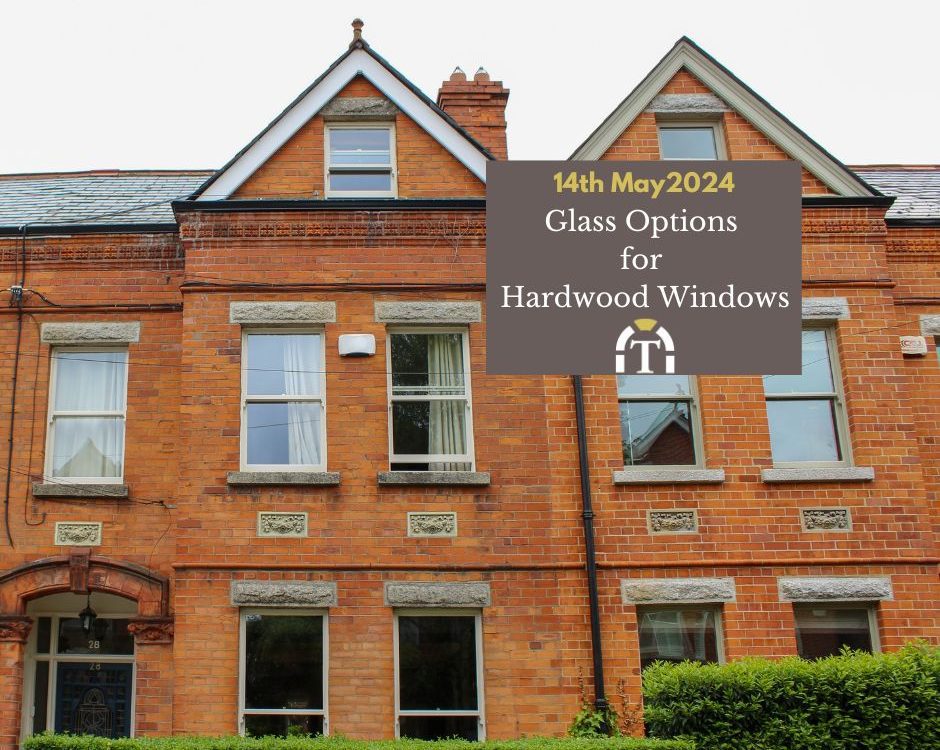
RIAI CPD Accredited Presentation
24/01/2024
Timeless Elegance: Discover the Beauty of Sash Windows
14/03/2024
Image from Twitter @noonan_malcolm
Malcolm Noonan TD, Minister of State for Nature, Heritage and Electoral Reform has launched new guidance to support energy upgrades in traditional buildings: Improving Energy Efficiency in Traditional Buildings.
Safeguarding our built heritage combined with increasing thermal efficiency for modern living is a delicate balance. Additionally, in the case of historic windows, we don’t have standard U-values for the whole unit that that we can apply. This can make compliance with building regulations less straightforward.

Image https://www.malcolmnoonan.com
Current Building Regulations
According to the building regulations 2022 Part L, new windows in dwellings should achieve a U-value of 1.6 or less. This also applies to replacement windows, doors and rooflights in existing buildings.
These regulations, however, do not apply to works (including extensions) to an existing building which is a “protected structure” or a “proposed protected structure” within the meaning of the Planning and Development Act 2000.
However, this may pose particular difficulties for habitable buildings which, although not protected structures or proposed protected structures, may be of architectural or historical interest including buildings of traditional construction with permeable fabric that both absorbs and readily allows the evaporation of moisture.
Indeed, nearly all buildings constructed in Ireland from medieval times up until 1940 were constructed using traditional methods. In the governments Advice series, traditional buildings in Ireland primarily consists of those built with solid masonry walls of brick or stone, often originally finished with a lime-based render, single-glazed timber or metal windows, and a timber-framed roof clad in slate, tiles, copper or lead.
As such, the regulation states that in the case of houses of “architectural or historical interest” this demand is inappropriate, Instead, the best insulation standards that are compatible with maintaining the character should be used.
The historical value of a property is deemed on a case-by-case basis by the local council.
With regard to situations in traditional buildings where certified U-values cannot be achieved and default DEAP values are advised:
Studies by SPAB, the IGS, Heritage Council and others, have shown, that in traditional buildings, there is a discrepancy between the standardised DEAP values for a particular building material versus the actual case. The reality is that there is varying quality of both the material and craftmanship.
Traditional buildings are full of irregularities and defective areas, depending on the skills, tools and technology of the time.
As such, if traditional character buildings are required to meet these new minimum standards by applying current DEAP figures, it will put undue pressure on these buildings to meet the minimum standards which may lead to inappropriate renovations or unnecessary demolitions.
The aim instead should be to improve the energy efficiency as far as is reasonably practicable. The work should not prejudice the character of the building or increase the risk of long-term deterioration of the building fabric.
Ultimately, it can be damaging to have a requirement for the buildings to improve above their technical capabilities.
Guidance for Traditonal Buildings
Hence this recently released new guidance on improving energy efficiency in traditional buildings. With a deep-rooted cultural heritage and a significant number of historic structures, Ireland faces the unique challenge of balancing preservation with sustainability. This guidance aims to provide a roadmap for property owners, architects, and conservation professionals to transform traditional buildings into energy-efficient spaces without compromising their historical integrity.
Improving Energy Efficiency in Traditional Buildings
Understanding the Need for Energy Efficiency in Traditional Buildings
Traditional buildings are an integral part of Ireland’s architectural legacy, reflecting its rich history and cultural identity. However, these buildings often suffer from poor insulation, outdated heating systems, and inefficient energy usage, leading to excessive energy consumption and high carbon emissions. The new guidance acknowledges the urgent need to address these issues and recognizes the potential of traditional buildings to contribute to Ireland’s climate action goals.
We must also recognise the embodied carbon in these buildings as they stand, and the importance of maintaining our built heritage for future generations.
Key Principles of the Guidance
This guidance booklet, primarily for specifiers and installers, but equally relevant to homeowners of pre-1940s buildings, contains practical advice for on how to make the right decisions when undertaking retrofitting works while protecting the building’s heritage value. This advie should allow for making property warmer and more comfortable, while reducing energy bills. Reduving the energy consumption of these buildings is also an important step in meeting our climate targets.
Benefits of Implementing the Guidance
1. Reduced Carbon Footprint: Implementing the guidance will reduce the carbon footprint of traditional buildings, contributing to Ireland’s ambitious climate targets. By adopting energy-efficient measures, property owners can make a substantial impact on the environment and pave the way for a more sustainable future.
2. Improved Comfort and Well-being: Upgrading insulation, heating, and ventilation systems will enhance the comfort and well-being of occupants in traditional buildings. Improved indoor air quality, reduced drafts, and more consistent temperatures will create healthier and more enjoyable living and working environments.
3. Economic Benefits: Energy-efficient retrofitting can lead to long-term cost savings for property owners. Reduced energy bills, increased property value, and potential eligibility for grants and incentives make energy efficiency a financially viable choice.
Windows in Traditional Buildings
At Timeless Sash Windows, much of the work that we do is the restoration of old timber windows. We are adept at surveying and advising you towards the best solution. It is important to look at windows as part of the whole building and not in isolation. Leaks elsewhere in the building could be the cause of damage to the windows which would require remedial work before the windows are restored in order to avoid subsequent damage.
Further Reading
Heritage Council – Deep Energy Renovation of Historical Buildings



